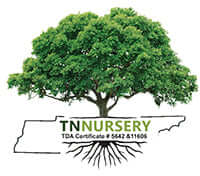
The Unique Squirrel Corn
Share
The Appearance of Squirrel Corn
Squirrel Corn (Dicentra canadensis) is a beautiful herbaceous perennial plant that grows along the ground of most hardwood forests in the eastern US. The leaves are dark green and white to pale pink heart-shaped flowers bloom on low stems in the early spring, usually beginning in April and lasting through May.
Dicentra canadensis grows at a leisurely pace, allowing it to be used for edging and ground cover in landscaping because it will not quickly take over and strangle other plants. It is best planted with ferns and other ground plants to ensure that it does not receive too much sunlight.
Caring for Squirrel Corn
In the garden, Dicentra canadensis generally grow about six inches high; though wild, they may be up to 12 inches. They are simple plants that start in a cold frame, and the seedlings can then be transplanted in the spring. Care should be taken, however, to wear gloves while working with these plants. The leaves are known skin irritants. The majority of the plant is toxic, which is actually beneficial as there are no animals that will chew on and destroy it.

Dicentra canadensis are named for the root system of the plant that resembles an ear of corn. This root has been historically used as a medicinal tonic to treat the symptoms of such ravaging diseases as tuberculosis (TB) and syphilis.
The Similar Characteristics of Squirrel Corn's Cousin
Dicentra canadensis plants are a close cousin of D. cucullaria. However, the flowers of the two plants tell them apart. Where the flower of the Squirrel plant is heart-shaped, those Dutchman's Breeches resemble those old-time riding trousers. These plants commonly grow in the same regions and can often be found next to each other in the same beds. Squirrel Corn and Dutchman's Breeches are the more uncommon plants.
How the Plant Received Its Name
Dutchman's breeches were given that name because of the unusual shape of their flowers, which look like a somewhat windblown pair of white cotton breeches. They dangle beneath arched stems above mounds of beautiful fringed leaves. Like the May Apple (Podophyllum peltatum), it's a perennial and appears in the spring. Also, like the May Apple (Podophyllum peltatum), it's native to woodlands in eastern North America. A person will know that spring is finally here if he or she sees these two perennial plants blossoming. By the way, both the May Apple and Dutchman's breeches have been used medicinally, and they're toxic to ingest by someone who doesn't know how to prepare them the right way.
The Myrmecochory of this Pant

One interesting thing about Dutchman's breeches is that in the wild, they use ants to spread their seeds. This is called myrmecochory. The ants are attracted to a membrane around the seeds. They take the seed to the colony, eat the membrane, and take the seed to an ant landfill of sorts, where it's left to germinate. In the garden, Dutchman's breeches like the moist, well-drained loam and dappled shade of its native woods.
